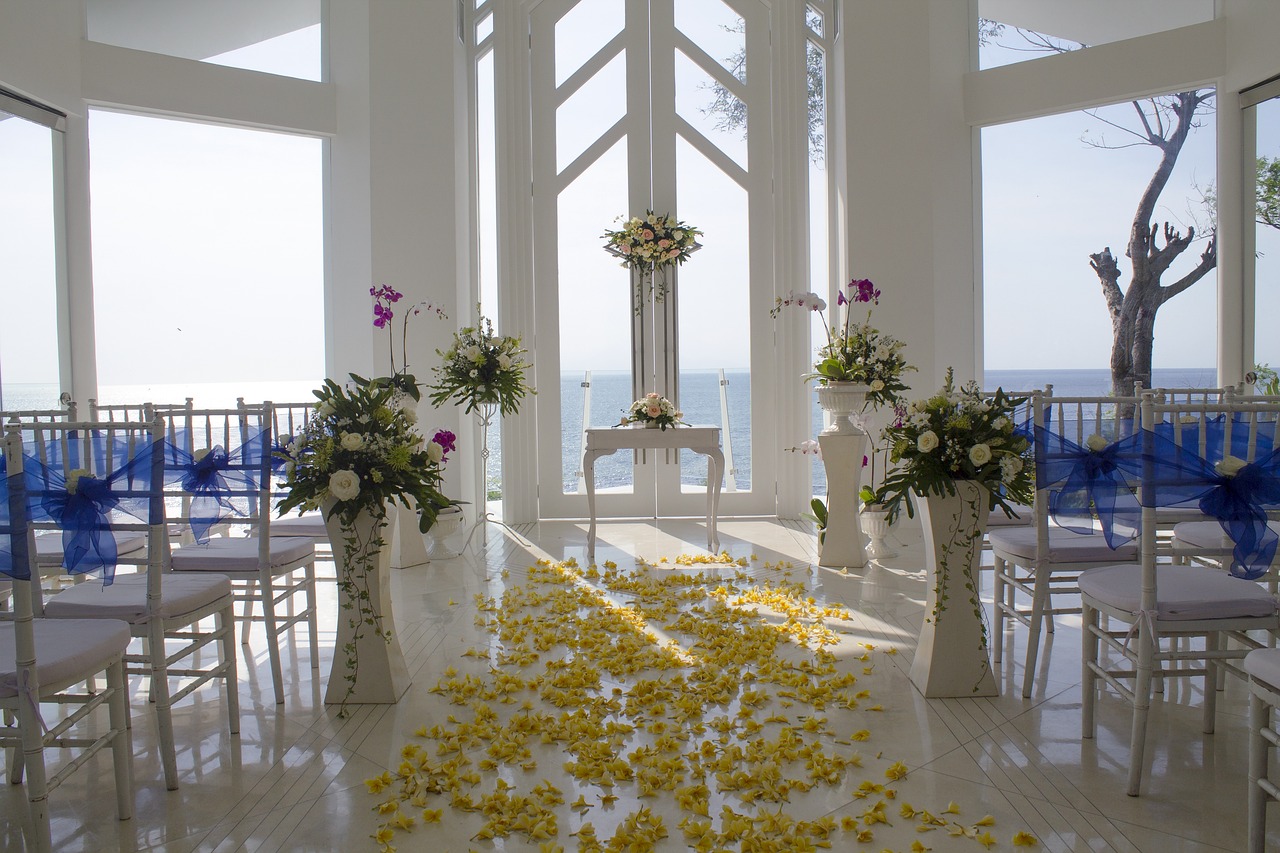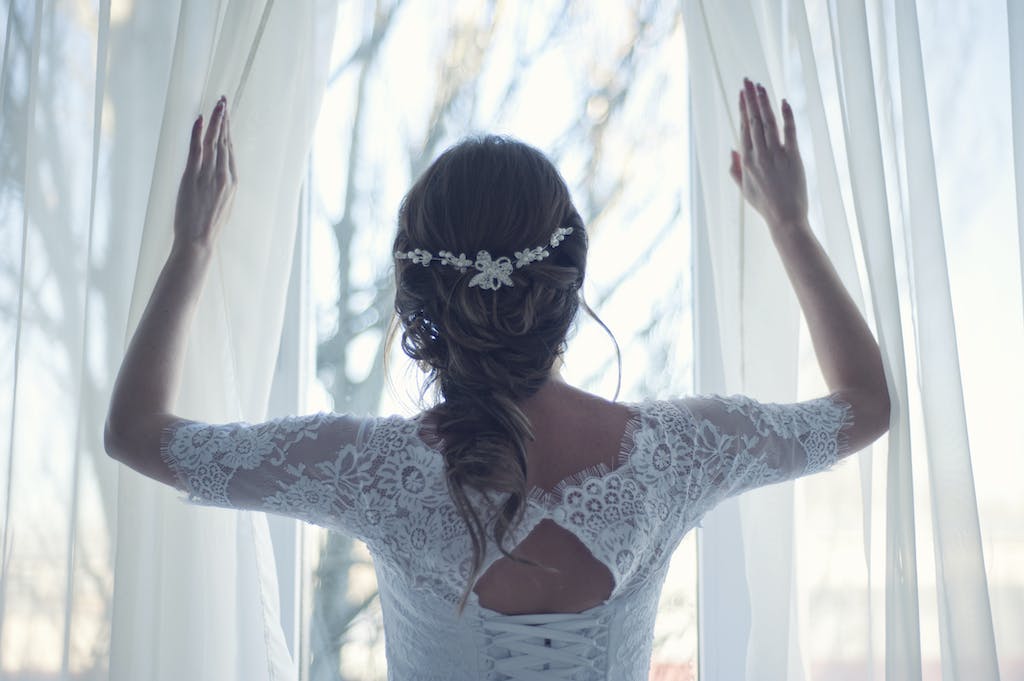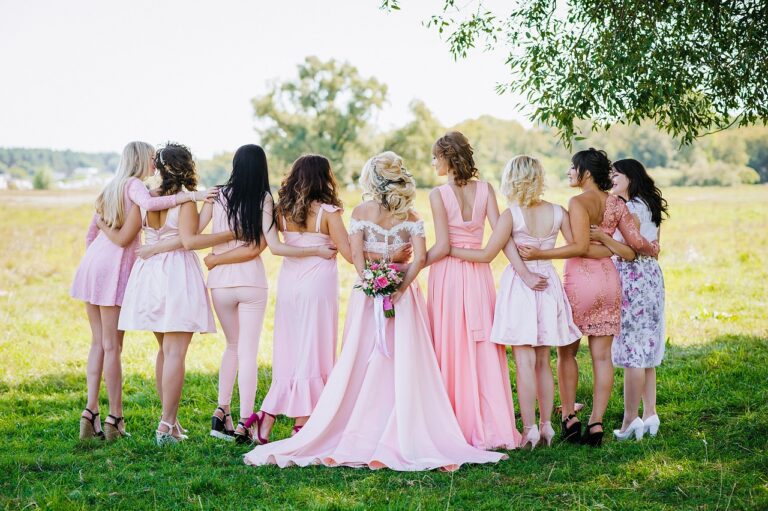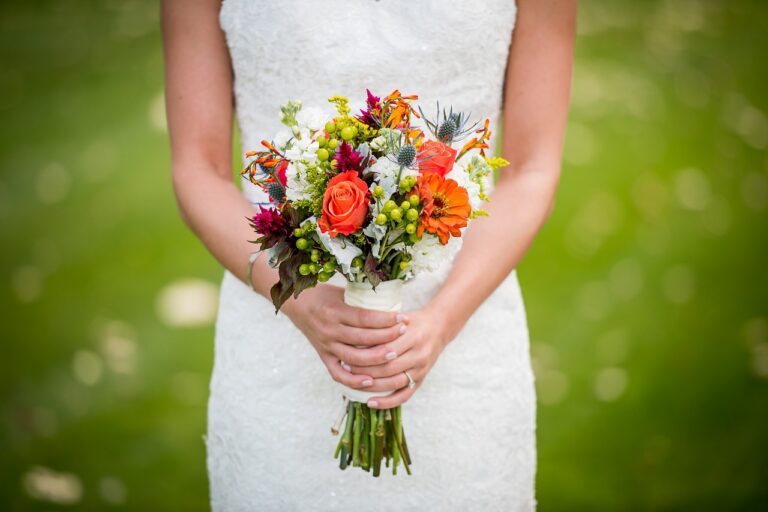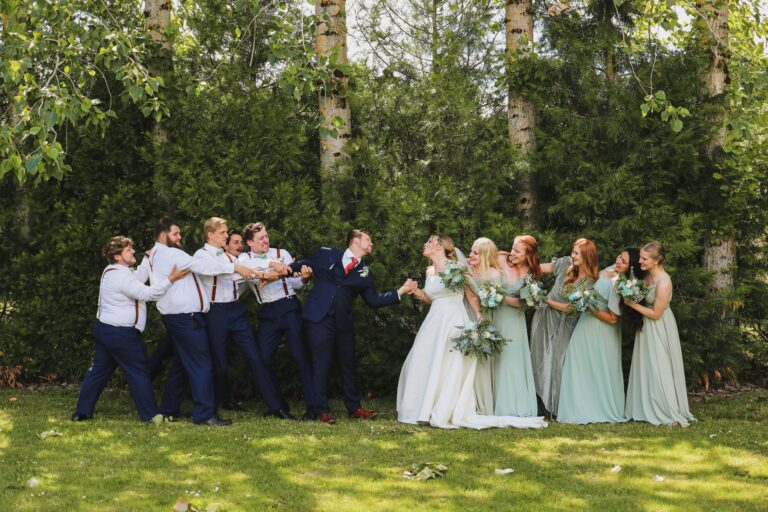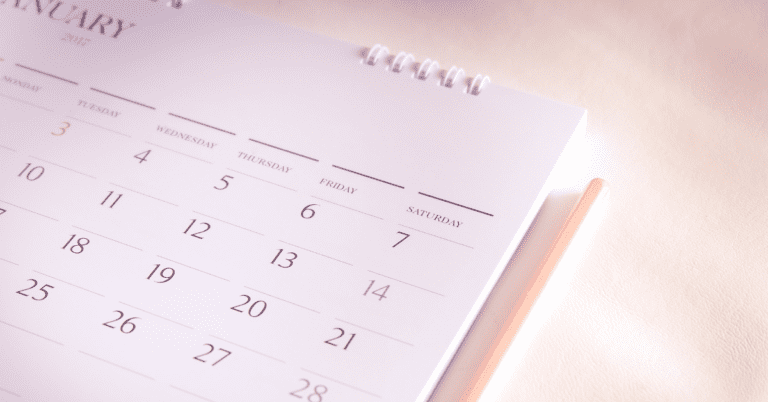Planning a Traditional Wedding: Key Steps for a Timeless Ceremony
Planning a traditional wedding can be both thrilling and daunting. It encompasses a range of activities from setting a vision that honors long-standing customs to handling the minutiae of event planning.
When you embark on this journey, you are not just throwing a party. You are also embracing time-honored traditions that may have deep meaning for you, your family, and your community. Your wedding planning efforts will focus on harmonizing those traditions with your personal touch to create a day that’s uniquely yours.

A traditional wedding often includes a set of rituals and ceremonies steeped in cultural or religious heritage. Whether it’s selecting the perfect venue that resonates with such traditions or choosing attire that reflects customary bridal and groom styles, each detail plays a pivotal role in bringing the essence of a traditional wedding to life.
While tradition forms the framework of your wedding day, your personal flair will be what truly makes it memorable. Beyond customs, you’ll also juggle practical considerations like budgeting, scheduling, and coordinating with vendors to ensure that your vision becomes a reality without undue stress.
Key Takeaways
- Embrace cultural traditions and incorporate personal elements to make the wedding uniquely yours.
- Attention to detail in attire, venue, and customs enriches the traditional wedding experience.
- Balance honoring traditions with practical planning for a memorable and stress-free celebration.
Setting the Wedding Vision
When planning a traditional wedding, establishing a clear wedding vision is crucial. The vision acts as a blueprint, guiding your decisions and ensuring that every element reflects the desired atmosphere of your big day.
Start by contemplating the wedding style that resonates with you. Do you envision a classic ballroom affair or a garden party?
Your style will directly influence the wedding theme. Consider key aspects like formal wear for a black-tie event, or floral-printed dresses for a bohemian theme.
Websites like The Knot offer extensive inspiration for defining your wedding vision.
Compromise is essential, particularly if you and your partner have differing tastes. Discuss the elements that are most important to each of you. Maybe it’s the music for one and the floral arrangements for another. Prioritize these to create a balanced list of wedding priorities.
Pick a color palette early on as it will inform many of your decisions, from invitations to bridesmaid dresses.
Make selections that enhance the traditional feel, perhaps opting for classic hues like ivory or navy. For guidance on traditional color schemes, Greenvelope provides expert advice.
Develop your wedding vision by using tools like a vision board, which can include images, fabrics, colors, and any element that you’re drawn to.
This can be a physical board or a digital one on platforms like Pinterest or Canva. For tips on creating a cohesive vision board, check out WedSites Blog.
Building your wedding vision helps to ensure a cohesive and harmonious event that feels authentic to you as a couple.
Remember, your wedding vision is the compass that will steer all your planning decisions, paving the way for the wedding that perfectly mirrors your combined preferences and dreams.
Traditional Church Ceremonies
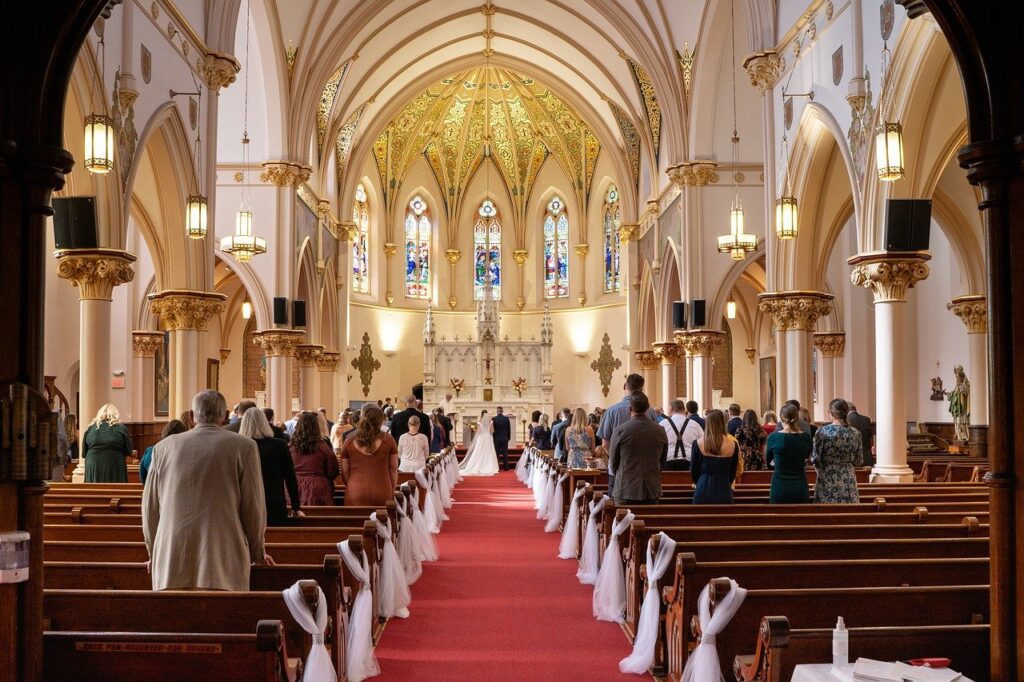
When planning traditional church weddings, familiarity with the customary elements helps ensure a smooth process, ensuring that every detail is meticulously coordinated to create a memorable and seamless experience for the couple and their guests.
From selecting the perfect hymns to arranging the order of service, understanding the traditional rituals and practices allows for a thoughtful and meaningful ceremony that reflects the couple’s beliefs and values.
Additionally, being well-versed in the protocols of the church can aid in navigating any potential challenges or unexpected circumstances that may arise, ensuring that the day proceeds with grace and elegance. With careful attention to tradition and protocol, the wedding ceremony becomes a sacred and joyous occasion, cherished by all who attend.
Begin by arranging a meeting with your officiant, as they will guide you through the ceremony structure and marriage requirements.
Key Components:
- Pre-Marital Counseling: Often mandatory, programs like Pre-Cana prepare you for marriage.
- Dress Code: Inquire about specific attire protocols, such as covering shoulders.
| Aspect | Description |
|---|---|
| Ceremony Structure | Includes prayers, readings, vows, and the exchange of rings. |
| Music & Hymns | Choose from traditional hymns to enhance the sacred atmosphere. |
| Processional & Recessional | Order of entry and exit, typically involving the bridal party. |
Remember, every church may have its own traditions or guidelines, so it’s important to respect these practices.
Hymns are a staple of church weddings, adding a layer of reverence and community spirit.
It’s advisable to consider family or cultural traditions that may influence your ceremony.
A sit-down meal and speeches are distinctive features in many traditional weddings, creating lasting memories.
Lastly, be attentive to your guest experience—adequate time for greetings and celebrations are imperative for a heartfelt reception.
With thoughtful planning, your traditional church wedding will be a cherished ceremony that honors both your faith and personal love story.
Classic Wedding Ceremony Ideas
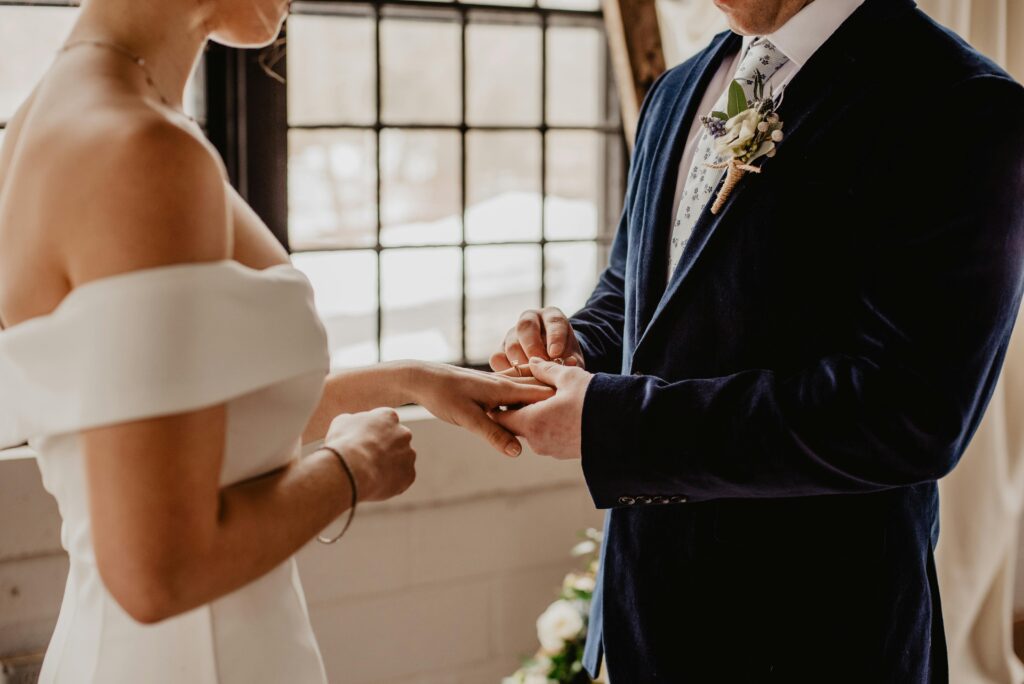
When planning your traditional wedding ceremony, you want to embrace customs that have stood the test of time. These elements add a touch of reverence and continuity to your special day. Here are some traditional wedding ceremony ideas to consider:
Vows: Many couples choose to recite traditional vows that have been passed down through generations. These vows often encompass promises of love, commitment, and fidelity.
Processional: The wedding processional usually begins with the groom and their party, followed by the bridesmaids and groomsmen, and ends with the bride making a grand entrance escorted by a family member.
Music: Consider incorporating classical music or traditional hymns that resonate with the theme of undying love and commitment.
Exchanging of Rings:
- The ring exchange is a poignant moment. Select rings that symbolize your eternal bond.
Readings:
- Choose readings from religious texts, literature, or poetry that reflect your values and relationship.
Unity Ceremony:
- Unity candles or sand ceremonies are a visual representation of two lives joining as one.
Attire: Embrace historical fashion such as an ivory or white dress for the bride and a tailored suit or tuxedo for the groom.
To highlight these traditional elements, it’s often the small details that speak volumes, like beautifully designed invitations from Brides to set the tone or expert tips on planning from Greenvelope.
Remember, your traditional wedding ceremony is a reflection of your love story, steeped in the customs that honor both your heritage and your future.
Budgeting for the Big Day
Creating a budget for your wedding is a critical step in the planning process, ensuring you allocate funds appropriately to bring your special day to life without financial strain.
Overall Financial Planning
Begin by establishing your total wedding budget, which will serve as a financial framework for all subsequent decisions.
Assess your financial resources and determine what you and your family can contribute. This total amount will guide how many guests you can invite and what kind of reception venue you can afford. Remember to keep a contingency fund for unexpected expenses.
Allocating Funds to Key Aspects
After setting your total budget, break it down by allocating portions to different areas of your wedding.
For example, your reception venue might take a significant chunk of the budget, often around 40-50%.
Catering can then follow, usually taking up another substantial portion. Here’s a simplified breakdown:
- Reception Venue: 40-50% of your budget
- Catering: 30-40% of your budget
- Photography and Videography: 10-15% of your budget
- Attire and Beauty: 5-10% of your budget
- Music/Entertainment: 5-10% of your budget
- Flowers and Decor: 10-15% of your budget
Keep in mind the expenses for your dress or tux, decor, and entertainment can vary widely, so adjust according to your preferences and prioritize what matters most to you.
The number of guests will influence catering and venue costs, so finalize your guest count early in the planning process.
Selecting the Date and Venue
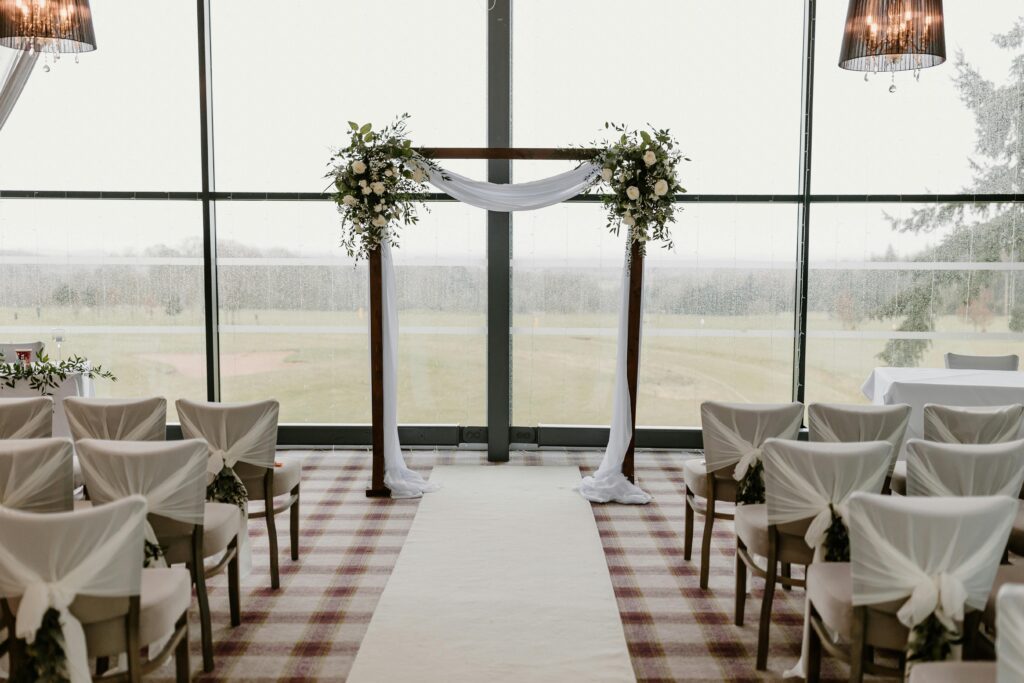
Selecting the right date and venue for your wedding sets the foundation for your special day. These decisions will influence availability, budget, and the overall atmosphere of your celebration.
Choosing the Right Wedding Date
When picking your wedding date, consider the season and its significance to you and your significant other. Popular months often book fast, so if you have a specific date in mind, start early. Check religious or cultural dates to avoid conflicts, and consult with close family and friends to ensure they can attend.
For those considering a destination wedding, accommodate extra travel time for guests.
Seasonal Considerations:
- Spring/Summer: Ideal for outdoor weddings but often more expensive.
- Fall/Winter: Offers unique thematic possibilities and can be more budget-friendly.
Key Factors:
- Availability of your preferred vendors.
- Holiday schedules which may affect guest attendance.
- Significant dates that hold personal value to you both.
Finding the Perfect Wedding Venue
Your venue must align with the vision and scale of your wedding. Evaluate whether you prefer a local venue or a destination wedding and consider the convenience for guests.
For traditional weddings, places of worship might be your top choice. Ensure the venue can accommodate your guest list and meets your aesthetic needs.
- Venue Checklist:
- Capacity: Make sure it comfortably fits your guest list.
- Location: Accessible for guests, with accommodations nearby if necessary.
- Amenities: Essential features like parking, restrooms, and accessibility.
- Popular Types of Wedding Venues:
- Historic venues: Rich in character, offering a distinguished backdrop.
- Outdoor spaces: Gardens, vineyards, or beaches, ideal for scenic nuptials.
- Banquet halls: Versatile and typically equipped for large events.
Start your search by browsing wedding venues and considering the type of ceremony and reception you envisage. Remember to visit multiple places to compare and ensure you find a place that feels right for your celebration.
Guests and Invitations
When planning your traditional wedding, managing your guest list and invitations becomes the foundation for how you share your special day. Understanding whom to invite and how to invite them sets the stage for your event’s success.
Creating the Guest List
Start by determining the number of guests you plan to invite, which often hinges on your venue’s capacity and budget.
Traditionally, you’ll want to divide the list evenly between both partners’ families. It’s crucial to obtain RSVPs to finalize the headcount.
Here’s a quick guide for organizing your guest list:
- Categorize Guests: Family, close friends, colleagues, and others.
- Consider Plus-Ones: Decide your policy on additional guests.
- Children or Adults-Only: Choose whether to include children.
- Prioritize: Ensure immediate family and close friends are first on the list.
Designing and Sending Invitations
Your invitations are a taste of the wedding to come, so reflect the style and formality of the event. Choose matching wedding stationery, including save the dates, to maintain a cohesive look.
Here’s what to consider for your invitations:
- Timing: Send out save the dates 6-8 months in advance and invitations 8-10 weeks before the wedding.
- Details: Clearly state the date, time, and location. Add information on the dress code if necessary.
- Personalization: For a traditional touch, address guests by full names, including relevant titles.
- Escort Cards: Prepare escort cards in advance for a smooth seating experience at the reception.
Remember to design invitations that resonate with the formality of your wedding and ensure all the essential information is communicated clearly and elegantly.
Wedding Party and Attire
Choosing the right attire for your wedding party is a traditional aspect that adds elegance and coherence to your special day. You’ll need to consider predefined roles and the appropriate dress code that aligns with your wedding theme.
Roles in the Wedding Party
Your wedding party typically comprises close friends and family who have significant roles during the ceremony and festivities.
The bridesmaids and groomsmen serve as support for the bride and groom, and often, their attire complements the couple’s look.
Other roles include the flower girls and ring bearers, usually dressed to match the wedding’s aesthetic.
- Maid of Honor & Best Man: Often responsible for organizing the bridal shower and bachelor party.
- Bridesmaids & Groomsmen: Assist the couple in various tasks leading up to and on the wedding day.
- Flower Girls & Ring Bearers: Young members who add a cute factor, typically relatives or children of close friends.
Dressing for the Occasion
Selecting your wedding dress is a highlight of the planning process.
Traditionally, brides often choose an ivory or white dress adorned with intricate details like lace, beading, or a long train.
The groom’s attire is equally important, with a smart, tailored suit or tuxedo being standard choices.
- Wedding Dress: Options vary from A-line to ball gown, with a choice of veil and jewelry to complete the ensemble.
- Groom’s Attire: Selections range from traditional tuxedos to modern suits, accessorized with ties, cufflinks, and sometimes a waistcoat.
As for your wedding party, establish a wedding dress code to ensure uniformity.
Bridesmaids might wear dresses in a particular color palette, while groomsmen could don suits that align with the wedding’s formal level.
- Bridesmaid Dresses: Should complement the bride’s dress in color, style, and degree of formality.
- Groomsmen: Often wear attire that matches or coordinates with the groom’s, sometimes differentiated by boutonnieres or ties.
Ceremony Preparations
When planning your ceremony, three key elements require your attention: choosing an officiant, planning your processional and upholding traditions, and crafting and rehearsing your vows.
Choosing an Officiant
The person who leads your ceremony, your officiant, plays a pivotal role in your wedding.
Selecting someone who understands your vision and can personalize your ceremony is essential.
You might select a professional wedding officiant with a wealth of experience or perhaps a close personal friend who can speak genuinely about your relationship.
Just make sure this person is legally recognized to perform the ceremony in your state.
Planning the Processional and Traditions
Your processional sets the stage for your ceremony.
Typically, family and the wedding party walk down the aisle in a prearranged order, culminating with your arrival.
This traditional wedding ceremony order can help guide your processional planning.
Including meaningful traditions resonates with a sense of history and connection, but feel free to customize to reflect your relationship and personal values.
Writing and Rehearsing Vows
Your wedding vows are promises you make to each other and are a centerpiece of the ceremony.
Writing your own vows can add a unique and intimate touch. Aim for clarity and depth, focusing on the promises that matter most to both of you.
Prior to the wedding, organize a rehearsal dinner where you can practice your vows, preferably with your officiant present, to ease any pre-ceremony nerves.
This official rehearsal is crucial for smoothing out any wrinkles in the ceremony flow.
Creating the Reception Agenda
Crafting your reception agenda is a key step in ensuring a smooth and enjoyable celebration. From seating arrangements to the final dance, every detail contributes to the overall experience of your guests.
Seating Arrangements and Decor
When designing your seating chart, consider both the dynamics of your guests and the aesthetics of the reception venue.
Assign seats in a way that fosters comfortable interaction while also taking advantage of the venue’s space.
- Round tables typically accommodate 8-10 guests and facilitate better conversation.
- Rectangular tables may be used for a more communal feel or to fit in narrower spaces.
Incorporate your wedding decor into the table settings, with floral arrangements and confetti adding a personal touch to each table.
Entertainment and Activities
Your reception should reflect your personal style, whether it means having a band, a DJ, or both:
- Band: Ideal for live energy and adding a touch of class.
- DJ: Offers a wide range of music and keeps the party lively.
Plan the timing for key moments:
- First Dance: A pivotal tradition to consider right after the couple’s entrance.
- Dancing: Open the dance floor post-cake cutting to invite everyone to join.
Remember to leave some space for impromptu fun, ensuring a memorable night for all your guests.
Speeches and Toasts
Speeches and toasts are milestones within the reception that require careful timing:
- Begin with the father of the bride, followed by the best man, and then the maid of honor.
- Encourage speakers to keep their words brief and heartfelt.
Your reception agenda should clearly indicate when the wedding cake will be cut, as this often signals the close to formal events and the start of open dancing.
Aim to conclude speeches and toasts before this point, allowing for a seamless transition into the latter part of the evening.
Vendors and Services
As you embark on planning your traditional wedding, understanding the significance of vendors and services is crucial. These professionals will bring your wedding vision to life, ensuring every detail is managed with expertise.
Securing Professional Assistance
Wedding Planner:
Hiring a wedding planner can be a game-changer in orchestrating your big day. They’ll provide you with a comprehensive wedding planning checklist and timeline, guiding you through the maze of details and decisions.
With their experience, planners help in picking out the right vendors, negotiating contracts, and keeping you on budget.
- Benefits of a Wedding Planner:
- Ensures consistency and flow of wedding theme and activities.
- Provides access to professional wedding planning tools and vendor connections.
- Saves you time and reduces stress by handling vendor communications and logistics.
Selecting Service Providers
Vendors:
Your vendor team forms the backbone of your wedding day services. It’s essential to choose providers who are experienced and come highly recommended.
Below is a list of key service providers you’ll need to consider:
- Catering: Decide whether you want a traditional buffet or a plated first course dinner, and choose a caterer known for outstanding service and delectable menus.
- Bartender: If you plan to serve alcohol, hiring a professional bartender is recommended to manage the bar efficiently.
When engaging with these service providers:
- Review their portfolios and read online reviews, like those found on The Knot.
- Meet with them to assess their understanding of your vision and discuss your wedding’s specific needs.
- Confirm their availability on your wedding date and inquire about package options and what’s included.
Finalizing the Details
When you are in the final stages of planning a traditional wedding, attention to detail is crucial. Nailing down the last pieces like guest accommodations and your day-of timeline ensures a seamless wedding day.
Managing the RSVPs and Guest Accommodations
After you’ve sent out invitations, managing the RSVPs is a priority to determine your final guest list.
Create a spreadsheet or use a platform like Zola for tracking who will attend.
Based on the confirmations:
-
- Update your guest list: Mark off who has replied and who you still need to hear from.
- Contact late responders: A polite follow-up is necessary for those who haven’t replied by your given deadline.
For guest accommodations, partnering with a local hotel to reserve a block of rooms is key.
Ensure to:
-
- Communicate booking details: Send out emails or cards with instructions on how to book within the reserved block.
Confirming the Day-of Timeline
Your wedding timeline is your minute-by-minute schedule for the entire wedding day.
-
- Create a binder or digital document: Include the ceremony, reception, and all related activities.
- Discuss with vendors: Share the timeline with them well in advance for a coordinated effort.
Pre-Wedding Events
The period leading up to your wedding is filled with various important events that set the stage for the big day. From the rehearsal dinner which finalizes the ceremony details to other festivities that celebrate your upcoming nuptials, here’s a focused look at how to navigate these traditions effectively.
Hosting the Rehearsal Dinner
Rehearsal Dinner Basics
-
- Objective: Fine-tune the ceremony flow
- Attendees: Wedding party, immediate family, and select guests
- Timing: Typically held the evening before the wedding
The rehearsal dinner is not just a formality but a chance to ensure everyone is on the same page regarding the wedding ceremony.
This intimate gathering often includes toasts and speeches, serving as a relaxed counterpart to the formality of the wedding day.
When planning, pay special attention to the guest list, ensuring all key members of the rehearsal are invited.
Navigating Pre-Wedding Festivities
Pre-Wedding Festivities to Consider
-
- Engagement Party
- Bridal Shower
- Bachelor/Bachelorette Parties
- Welcome Party
These events vary based on personal preference and cultural traditions.
Your engagement party kicks off the celebration, usually hosted by close friends or family.
Bridal showers and bachelor/bachelorette parties follow, offering a personal touch and the opportunity for close friends and family to bond.
If you have guests traveling from afar, a welcome party is a considerate gesture to thank them for their journey.
Each event builds anticipation and excitement leading up to your special day.
Post-Wedding Considerations
After your traditional wedding celebration concludes, attention shifts from the joy of the ceremony to fulfilling post-wedding obligations. It’s essential to manage these tasks promptly to honor the commitments you’ve made to your guests and to each other.
Sending Thank-You Notes
Timeliness is Key: You should send thank-you notes within three months after your wedding.
Begin by listing everyone who gave you a gift along with their present.
It’s not just courtesy but a reflection of your gratitude for their involvement in your wedding registry and your shared celebration.
-
- Create a checklist of recipients.
- Draft personalized messages for each gift.
- Purchase stationery that reflects your wedding theme or new marital status.
Handling Post-Wedding Tasks
Update Important Documents: Now that you are a legally married couple, it’s necessary to update various documents that reflect your new commitments and union.
-
- Legal Identification: Consider your driver’s license, passport, and social security information.
- Financial Accounts: Joint bank accounts and credit cards need to reflect your marital status.
- Insurance and Employment: Notify your employers and insurance companies to ensure coverage and benefits are current.
Frequently Asked Questions
In this section, you’ll find targeted answers to common queries regarding traditional wedding planning.
What are the essential elements to include on a traditional wedding checklist?
Your traditional wedding checklist should include the venue, attire, catering, photographer, florist, entertainment, transportation, and invitations. Careful consideration for ceremonial elements, like aisle decor and a guest book, is also vital.
What budget should be anticipated for a traditional wedding?
Anticipate a budget that covers the venue, attire, food, photography, music, and decor.
The cost varies widely by location and vendor, but national averages suggest setting aside anywhere from $20,000 to $30,000 to cover all traditional aspects of a wedding.
What is the usual sequence of events in a traditional church weddings?
A traditional wedding ceremony typically follows this sequence: processional, welcome remarks, readings, exchange of vows, ring exchange, the pronouncement of marriage, and the recessional. Additional elements like unity ceremonies can be included.
What are some effective strategies for planning a traditional wedding on a small budget?
To plan a traditional wedding on a small budget, prioritize key elements, consider a longer engagement for savings, opt for a less popular date or time, and explore DIY options. Research tips and tricks can lead to significant savings.
Which traditional wedding customs are typically observed, and how can they be incorporated?
Customs like the bridal bouquet, groom’s boutonniere, exchanging of rings, and the first dance are typically observed in traditional weddings.
Integrate these by selecting personal touches that reflect your heritage and tying them to the day’s festivities.
How early should you commence preparations for a traditional wedding?
Begin preparing for a traditional wedding at least a year in advance. This will help you secure desired vendors and venues. For custom elements like attire or specialized themes, you may need more time.
